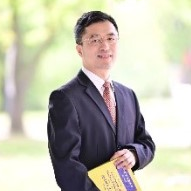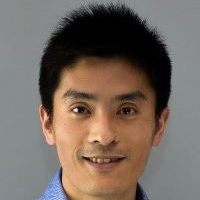Advanced Photonic Applications
A special issue of Electronics (ISSN 2079-9292). This special issue belongs to the section "Optoelectronics".
Deadline for manuscript submissions: closed (15 October 2023) | Viewed by 1065
Special Issue Editors
Interests: optical communication systems analysis and optical signal processing
Interests: photonics device design and characterization
Special Issues, Collections and Topics in MDPI journals
Special Issue Information
Dear Colleagues,
Photonics has been widely considered as the future alternative to accelerate the processing speed of electronics. Its fast processing speed with ultra-low power consumption encourages the researchers to find more applications in various areas.
Optical communication is a successful example of the photonic applications, which starts from the invention of optical fibers by Charles Kao and serves as the backbone of the communication network at the moment. The evolution of the optical communication has entered the era of higher order modulation format, space division multiplexing and ultra-broadband transmission, which is based on the advanced photonic technologies.
All optical signal processing enables light speed processing and is attractive in various areas. The linear and nonlinear properties of materials can be exploited to build novel functional devices. The recently emerging diffractive deep neural network is a significant trial of the advanced photonic signal processing techniques in the area of artificial intelligence (AI).
In the Special Issue of “Advanced Photonic Applications”, we encourage the colleagues in the area to submit high quality works, focusing on the modeling, simulation, design, analysis, and experimentation of advanced photonic applications to benefit the related research communities and the interested audience.
Prof. Dr. Junhe Zhou
Prof. Dr. Kan Wu
Guest Editors
Manuscript Submission Information
Manuscripts should be submitted online at www.mdpi.com by registering and logging in to this website. Once you are registered, click here to go to the submission form. Manuscripts can be submitted until the deadline. All submissions that pass pre-check are peer-reviewed. Accepted papers will be published continuously in the journal (as soon as accepted) and will be listed together on the special issue website. Research articles, review articles as well as short communications are invited. For planned papers, a title and short abstract (about 100 words) can be sent to the Editorial Office for announcement on this website.
Submitted manuscripts should not have been published previously, nor be under consideration for publication elsewhere (except conference proceedings papers). All manuscripts are thoroughly refereed through a single-blind peer-review process. A guide for authors and other relevant information for submission of manuscripts is available on the Instructions for Authors page. Electronics is an international peer-reviewed open access semimonthly journal published by MDPI.
Please visit the Instructions for Authors page before submitting a manuscript. The Article Processing Charge (APC) for publication in this open access journal is 2400 CHF (Swiss Francs). Submitted papers should be well formatted and use good English. Authors may use MDPI's English editing service prior to publication or during author revisions.
Keywords
- linear and nonlinear optics
- classic optics
- quantum optics
- fiber optics
- waveguide optics
- optical devices
- optical communications
- optical precise measurement
- optical sensors






